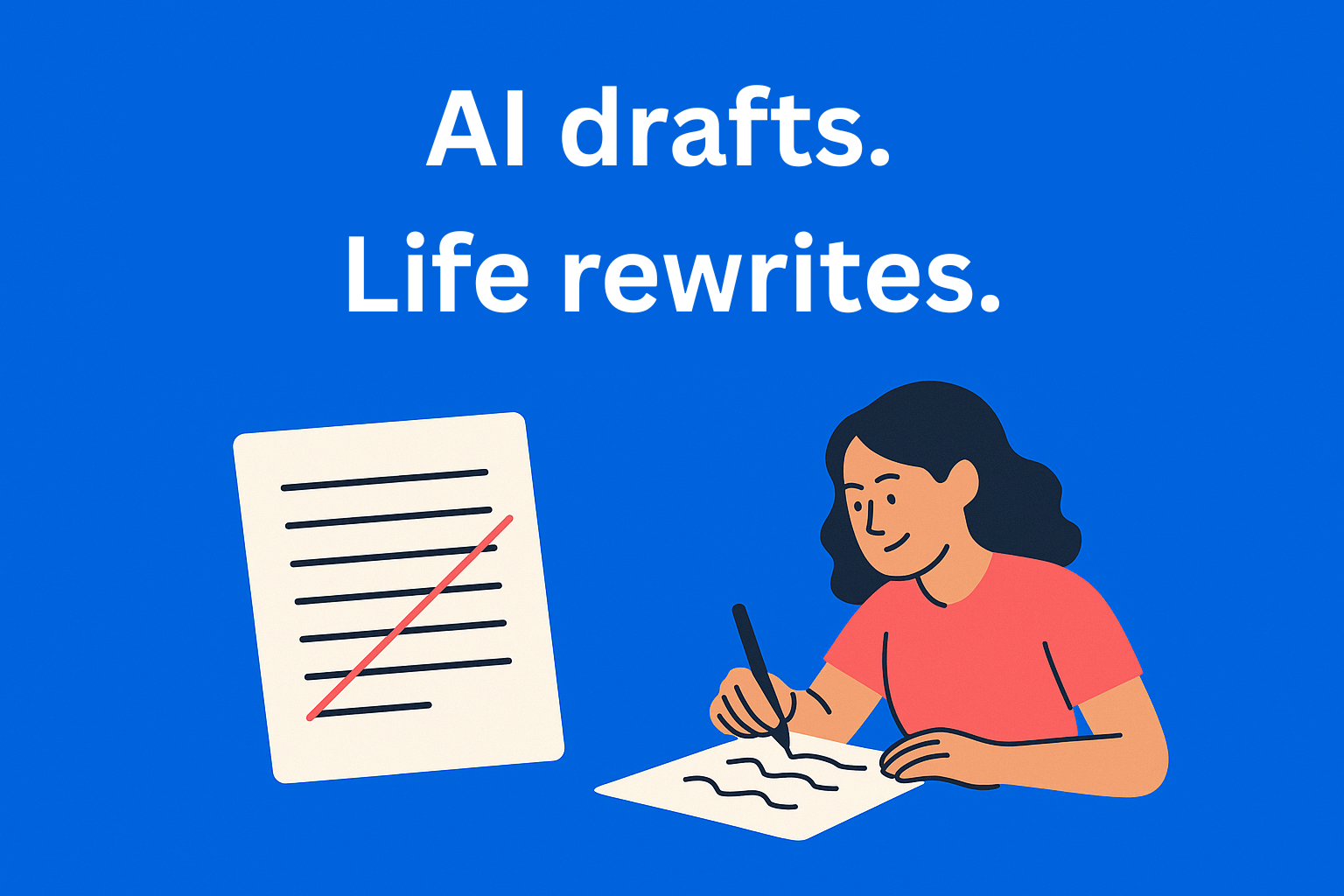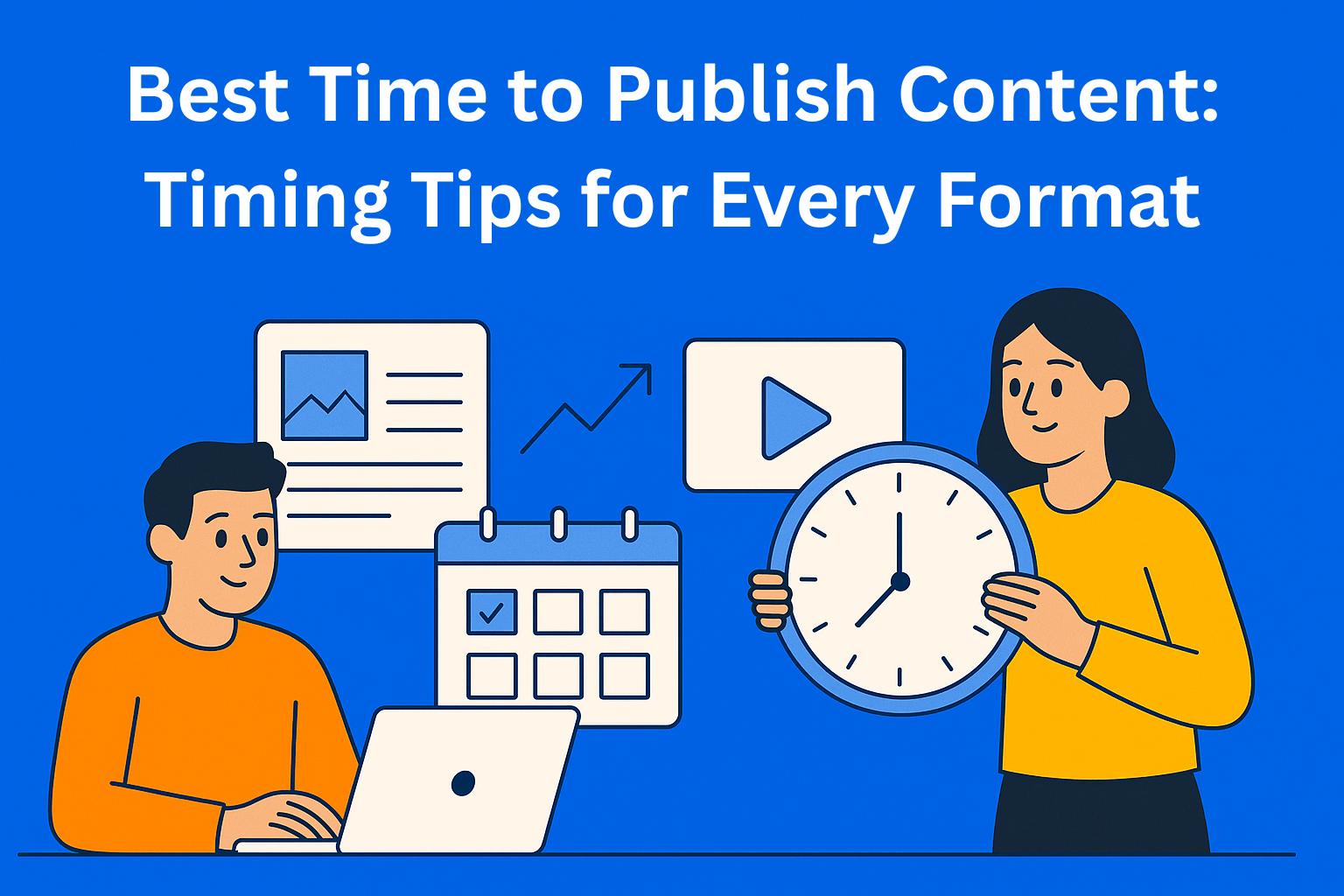AI Writes in Straight Lines - But Real Stories Have Curves
AI writes fast and accurately, but it’s a bit too smooth. Real writing has curves - small mistakes, a personal touch, and messy thoughts that help readers connect. If you want your text to feel human, add a bit of yourself. Let it breathe. Give it a soul.

AI-generated content has come a long way. It’s fast, coherent, and impressively accurate (sometimes too accurate). Give it a prompt, and it’ll spit out a neatly structured article with perfect grammar, balanced paragraphs, and not a single word out of place.
And that’s the problem.
AI writes in straight lines. It follows rules and patterns so perfectly that it strips the writing of everything that makes it feel... human. No detours, no quirks, no curveballs - just efficiency. But humans don’t talk like that, and we certainly don’t write like that either.
If you want your content to connect with readers, you need to break the straight line. You need curves.
Key Takeaways
- AI writes with precision, not personality - It follows patterns and probabilities, often leaving out emotion, rhythm, and authenticity.
- Smooth, polished text can feel robotic - Content that's too perfect lacks quirks, surprises, and human nuance - making it forgettable.
- “Curves” make content human - Imperfections like humor, casual tone, wonky metaphors, or honest detours create stronger connections with readers.
- Edit AI content like a storyteller - Break patterns, add voice, share real stories, and make the flow feel conversational - not like a manual.
- Templates can guide, not restrict - With smart templates and tone guidelines, teams can keep AI content human while staying on brand.
Why AI Sounds Like AI
The main reason AI content feels so polished (and so robotic) is because it’s designed to optimize for probability and not personality.
When an AI model generates text, it’s predicting the most likely next word based on everything it has learned from billions of examples. It’s not thinking about pacing, emotion, or narrative rhythm. It’s doing math. And math is everything but emotional.
This is why you often get content that reads like:
“In today’s fast-paced digital world, businesses must leverage innovative tools to stay ahead of the competition.”
Nothing’s wrong with that sentence. But also... nothing’s right. It’s the written equivalent of white noise - technically correct, but emotionally flat. And when you stack a few hundred words like that, you don’t get a story. You get a pamphlet.
Even when you ask AI to “sound more casual” or “write like a human,” it still sounds polished, even with a joke or two in the text. That’s why so much AI content feels like someone trying to impersonate a writer rather than being one.
Why We Need to Fix It
Content that sounds too polished creates a strange disconnection. Something similar to Uncanny Valley - it makes you feel uneasy.
It’s like listening to someone who never uses contractions, never trips over a thought, and never injects a bit of themselves into what they’re saying. It feels rehearsed. Predictable. Safe.
But humans aren’t safe communicators. We ramble. We double back. We say things like “you know what I mean?” and start stories we never finish. And that’s where the connection happens. That’s where we feel the voice behind the words.
Readers aren’t just skimming your content for answers - they’re listening for signs of life.
So when your content sounds like it was mass-produced, even if the information is good, the connection falls flat. And in a time when trust and authenticity matter more than ever, that’s a problem you can’t ignore.
The Beauty of Curves
Let’s talk about the curves - the little imperfections, unexpected shifts, and personal touches that turn flat content into something worth reading.
A “curve” might be:
- A slightly wonky sentence that pauses mid-thought and continues in a new direction
- A bit of dry humor or sarcasm tucked into a paragraph
- A story that starts with, “I didn’t expect this to happen, but...”
- A metaphor that doesn’t quite land, but makes you smile anyway
- A moment of honesty that’s not smoothed over for polish
- Or even a grammar “mistake” that makes the sentence sound more conversational
These are the things AI usually removes (try writing "really" in a sentence while having Grammarly on, sheesh) or never thinks to include in the first place. But for a human reader, they’re often the most memorable bits.
Curves aren’t flaws. They’re fingerprints.
They show that a real person was behind the words, thinking through ideas, adding their flavor, and letting the structure bend to the message and not the other way around.
How to Edit AI Content the Right Way
So if AI gives you the straight line, how do you add the curves?
Here’s what to look for when editing AI-generated content:
1. Start by Breaking the Pattern
AI loves symmetry. Paragraphs start the same way. Sentences follow identical rhythms. If you start to feel hypnotized by your own text, break the trance. Chop up a paragraph. Combine two short ones. Add variety to how each sentence begins.
Tip: Read it out loud. If it sounds like it’s being read from a teleprompter, it needs some curves.
2. Inject Personal Perspective
Even if you're not writing in the first person, there’s always room for a personal note. Instead of saying “Companies benefit from structured workflows,” say, “We’ve seen teams go from chaos to clarity just by defining three key steps.” That shift adds weight and voice.
3. Loosen the Language
Let go of overly formal phrases. Instead of “leverage synergies,” just say “work together better.” Instead of “maximize efficiency,” say “save time.” Talk like a person - not a pitch deck.
If AI writes like your legal department, your job is to translate it into something a human would actually say.
4. Add a Story or Analogy
Stories are your curveball. Even a short one (a moment from a project, a client quote, or an internal “aha!”) can ground the piece and give it some color. If you can’t find a story, use a metaphor. Compare the process to cooking, travel, music, anything that makes the concept stick.
5. Give It a Human Flow
Look at how the content moves. Does it read like a conversation or a textbook? You want pauses, transitions, and little setups for the next section. A great trick is to write like you're guiding someone through the idea, not just dumping facts on them.
How Templates Can Help (If You’re Managing a Team)
If you’re managing a team of writers (especially one that leans on AI tools), consistency without sounding robotic becomes even more challenging.
That’s where templates come in handy - not just for structure, but for tone and guidance.
In EasyContent, for example, content managers can build custom templates with built-in guidelines for tone, voice, style, and even specific phrases to avoid or use. These fields help writers (and editors) know the kind of “human” the content should sound like.
You can go beyond just saying “make it sound natural” - you can define what natural means for your brand.
Want a warm, conversational tone? Say that. Want a hint of dry humor in intros? Add it as a note. Want editors to check that the opening paragraph isn’t just generic fluff? Build that into the checklist.
Templates don’t kill creativity - they make sure the creativity stays on brand.
Conclusion
AI is a powerful writing assistant, a productivity booster, and in many cases, a brilliant first draft machine. But it’s just that - a draft.
To create content that truly resonates, we need to step in and bend the line. Inject voice. Add curves. Make it feel human.
So the next time you generate content with AI, don’t just hit publish. Read it, feel it, and shape it until it has a heartbeat. That’s the kind of content people remember - and trust.






